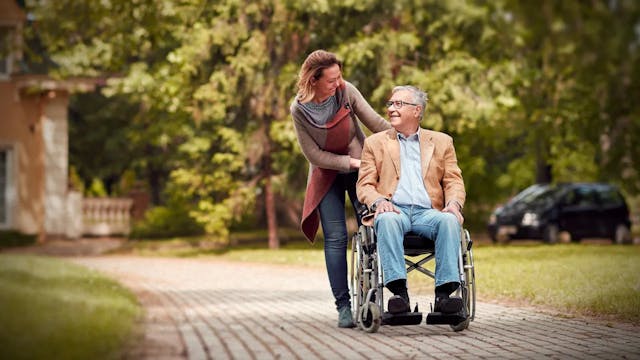By bringing our children to funerals, we invite them into the reality and mystery of death. This experience helps them develop empathy and compassion for others.
In our culture today, we often push death aside and pretend it doesn’t exist. We may think it would be better to hide children from pain and grief, but this stems from our own fears and struggles that we project onto others.
“Children have the unique ability to adapt to firsthand experiences and to culture in their own way—with their own minds and their own hearts—certain mysteries of life.”
Surrounded by their grieving loved ones, children learn the truth that life can be painful, but it is not bereft of joy even amid great pain. They learn to hope and to care for others who are hurting.
Up Next in Supplemental Videos
-
Why Is the End of Life a Time to be C...
The end of life is a privileged time: we can experience healing in our relationships as we make amends with God, family, and friends and prepare for the last step of our journey to eternity.
For many individuals and families, the end of life can be a challenging time filled with the unknown. H...
-
What is the Difference Between Pallia...
Palliative care is comfort care that can be implemented with or without an end goal of being cured. Hospice is concerned with keeping patients comfortable after they decide to cease aggressive, curative treatment.
Although many people—even medical professionals—may use the terms interchangeabl...
-
What Is the Goal in Palliative Care?
This approach to medicine allows patients the freedom to contemplate and assess their emotional and spiritual needs as they near the end of life.
The main goal of palliative care is to help with symptom management, but it goes beyond just physical pain. With proper treatment, patients are bett...



